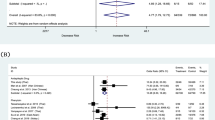Abstract
Background
Apart from allergic mechanisms, a lack or mutation of metabolic enzymes may cause adverse drug reactions. Patch testing has rarely been useful in cutaneous adverse drug reactions (CADRs) induced by diphenylhydantoin (DPH). Genetic polymorphisms leading to altered metabolic processes of cytochrome P 450 (CYP) 2C9, a main metabolic enzyme for DPH, may be the pathological mechanism for certain cases of DPH-induced CADRs.
Objective
To examine the effects of an altered CYP2C9 variant, CYP2C9*3, on DPH-induced CADRs.
Methods
Ten patients with DPH-induced CADRs were examined for CYP2C9 genetic polymorphisms. The results were compared with non-exposed controls and 39 neurological patients without DPH-induced CADRs despite exposure to DPH. The patients with DPH-induced CADRs were also patch tested with anti-epileptic drugs and the results were compared with 40 DPH-exposed and 58 non-exposed controls.
Results
A heterozygous CYP2C9*3 variant was found in three of the 10 DPH-induced CADR patients. The crude odds ratios (OR) of the patients compared with those of exposed and non-exposed controls were 167 and 71, respectively. Only one neurological patient, who had never taken DPH, showed the variant in both exposed (P=0.007) and non-exposed (P=0.001) controls. Positive patch-test results were displayed in three of the ten DPH-induced patients, but the patients with positive patch-test reactions to DPH differed from those with the CYP2C9*3 polymorphism. No patients and controls displayed a CYP2C9*2 variant.
Conclusion
A CYP2C9*3 variant could play a role in the proportion of patients with DPH-induced CADRs that differ from patients with DPH-induced CADRs showing positive patch-test results.
Similar content being viewed by others
References
Phillips KA, Veenstra DL, Oren E, Lee JK, Sadee W (2001) Potential role of pharmacogenomics in reducing adverse drug reactions. JAMA 14:2270–2279
Takahashi H, Kashima T, Nomoto S, Iwade K, Tainaka H, Shimizu T et al (1998) Comparisons between in-vitro and in-vivo metabolism of (S)-warfarin: catalytic activities of cDNA-expressed CYP2C9, its Leu359 variant and their mixture versus unbound clearance in patients with the corresponding CYP2C9 genotypes. Pharmacogenetics 8:365–373
Wang MH, Stec DE, Balazy M, Mastyugin V, Yang CS, Roman RJ, Schwartzman ML (1997) Cloning, sequencing, and cDNA-directed expression of rat renal CYP4A2: arachidonic acid w-hydroxylation and 11,12-epoxidation by CYP4A2 protein. Arch Biochem Biophys 336:240–250
Nasu K, Kubota T, Ishizaki T (1997) Genetic analysis of CYP2C9 polymorphism in a Japanese population. Pharmacogenetics 7:405–409
Stubbins MJ, Harries LW, Smith G, Tarbit MH, Wolf CR (1996) Genetic analysis of the human cytochrome P450 CYP2C9 locus. Pharmacogenetics 6:429–439
Daly AK (1995) Molecular basis of polymorphic drug metabolism. J Mol Med 73:539–553
Kaminsky LS, Morais SMF, Faletto MB, Dunbar DA, Goldstein JA (1993) Correlation of human cytochrome P4502C substrate specificities with primary structure: warfarin as a probe. Mol Pharmacol 43:234–239
Rettie AE, Wienkers LC, Gonzalez FJ, Trager WF, Korzekwa KR (1994) Impaired S-warfarin metabolism catalysed by the R144C allelic variant of CYP2C9. Pharmacogenetics 4:39–42
Haining RL, Hunter AP, Veronese ME, Trager WF, Rettie AE (1996) Alleleic variants of human cytochrome P450 2C9: baculovirus-mediated expression, purification, structural characterization, substrate stereoselectivity and prochiral selectivity of the wild-type and I359L mutant forms. Arch Biochem Biophys 333:447–458
Sullivan-Klose TH, Ghanayem BI, Bell DA, Zhang ZY, Kaminsky LS, Shenfield GM et al (1996) The role of CYP2C9-Leu 359 allelic variant in the tolbutamide polymorphism. Pharmacogenetics 6:341–349
Steward DJ, Haining RL, Henne KR, Davis G, Rushmore TH, Trager WF, Rettie AE (1997) Genetic association between sensitivity to warfarin and expression of CYP2C9*3. Pharmacogenetics 7:361–367
Hansen LB, Larsen NE, Vestergard P (1981) Plasma levels of perphenazine (trilafon) related to development of extrapyramidal side effects. Psychopharmacology 74:306–309
Shah RR (1993) Clinical pharmacokinetics: current requirements and future perspectives from a regulatory point of view. Xenobiotica 23:1159–1193
Veronese ME, Doecke CJ, Mackenzie PI, Mcmanus ME, Miners JO, Rees DL et al (1993) Site-directed mutation studies of human liver cytochrome P-450 isoenzymes in the 2C subfamily. Biochem J 289:533–538
Albright PS, Bruni J (1984) Pharmacokinetic interactions of antiepileptic drugs. Can J Neurol Sci 11:247–251
Anderson GD (1998) A mechanistic approach to antiepileptic drug interactions. Ann Pharmacother 32:554–563
Chadwick D, Shaw MD, Foy P, Rawlins MD, Turnbull DM (1984) Serum anticonvulsant concentrations and the risk of drug induced skin eruptions. J Neurol Neurosurg Psychiatry 47:642–644
Leeder JS, Riley RJ, Cook VA, Spielberg SP (1992) Human anti-cytochrome P450 antibodies in aromatic anticonvulsant-induced hypersensitivity reactions. J Pharmacol Exp Ther 263:360–367
Barbaud A, Goncalo M, Bruynzeel D, Bircher A (2001) Guidelines for performing skin tests with drugs in the investigation of cutaneous adverse drug reactions. Contact Dermatitis 45:321–328
Acknowledgement
This study was supported by a grant of the Korea Health 21 R&D Project. Ministry of Health & Welfare, R. O. K. (03-PJ10-PG13-GD01–0002).
Author information
Authors and Affiliations
Corresponding author
Rights and permissions
About this article
Cite this article
Lee, AY., Kim, MJ., Chey, WY. et al. Genetic polymorphism of cytochrome P 450 2C9 in diphenylhydantoin-induced cutaneous adverse drug reactions. Eur J Clin Pharmacol 60, 155–159 (2004). https://doi.org/10.1007/s00228-004-0753-0
Received:
Accepted:
Published:
Issue Date:
DOI: https://doi.org/10.1007/s00228-004-0753-0




